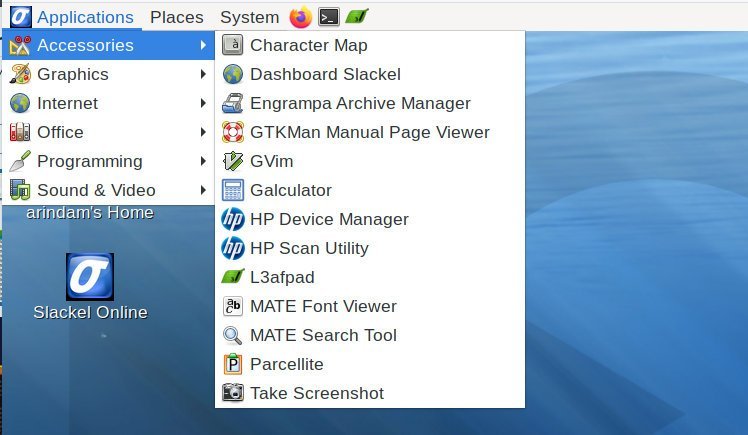Slackel 7.7 “MATE” is here! Discover the latest features, improved stability, and user-friendly experience.
Slackel 7.7 “MATE” Edition has officially arrived, bringing some exciting new features and improvements to your favourite lightweight distro. This release is coming after seven months and features a key change after a decade. I will talk about it a little later.
For those who are not aware, Slackel is a Linux distribution based on Slackware and includes tools borrowed from Salix. It is fully compatible with Slackware, but the difference is that it includes the current version of Slackware.
So Slackware users can benefit from Slackel repositories. Slackel disc images can be used in two different forms, Installation disc image and live disc image. Slackel can be installed on external storage media such as USB sticks as well as in hard drives, and, of course, in virtual machines.
Slackel’s goal is to be a stable, fast and light distribution. That said, let’s quickly round up this release.
Table of Contents
Slackel 7.7: What’s new
The most key highlights of Slackel 7.7 is the desktop environment change. Since the beginning (almost), Slackel used to feature the Openbox window manager as desktop user experience. In this release, the team adopted the super-lightweight desktop MATE. MATE 1.26.2 brings a familiar menu-driven user interface for you.
At the heart of this release lies the robust Linux kernel 6.6.11, offering enhanced stability, performance, and hardware compatibility. Application-wise, Slackel 7.7 “MATE” comes preloaded with a comprehensive selection of popular applications. Not to mention that all the MATE desktop native applications are available. Moreover, key applications such as LibreOffice 7.6.2, GIMP 2.10.36, Firefox 121.0.1, Thunderbird 115.6.1 are available. Plus, Flatpak support by default opens the door to a vast ecosystem of additional software.

The inclusion of salixtools from the Salix distribution enhances your system management capabilities with handy tools for package management and configuration.
- instonusb: Create a live Slackel USB stick with persistent encryption for added security.
- multibootusb: Craft a multi-boot USB drive containing both 32-bit and 64-bit Slackel editions.
- SLI (Slackel Live Installer): Install Slackel directly onto an internal or external USB drive for ultimate portability.
While remaining true to its lightweight roots, Slackel 7.7 “MATE” is not behind in terms of hardware support:
- You can take advantage of the native support for 64-bit systems, including UEFI/EFI boot capabilities.
- Slackel also features a 32-bit ISO for those older machines.
- Both ISO images are hybrid, meaning they can be used for live booting or direct installation, offering flexibility and convenience.
Performance
The lightweight MATE desktop gives an edge in the performance in the Slackel 7.7. At idle, it uses 420 MB of RAM in a virtual machine environment. This is good considering you may try to run it in a lower end hardware, having 2 GB of ram.
On top of this, as you move along with your workflow by opening many apps, the RAM, and CPU consumptions will increase proportionally.
The “full installation” takes 12 GB of disk space. Although, there is a minimal install option before you hit install.
Download
Before diving in, ensure your system meets the following minimum requirements:
- Processor: Minimum Core 2 Duo, Recommended Core i3
- RAM: 3GB (RAM) or 4GB (RAM) for heavy applications
- Storage: 20 GB HDD
Head over to the official website and download the ISO image that best suits your needs.
If you are using the Slackel 7.6, you can easily upgrade using the upgrade app.
Closing notes
With its intuitive installer and comprehensive documentation, Slackel is always a compelling choice for an independent Slackware-based distribution. Although, Openbox was more lightweight, MATE is also excellent in terms of tested user interface and lightweight nature.
If you haven’t tried Slackel, you should and experience a distribution which is both user-friendly and powerful.
Via release notes

